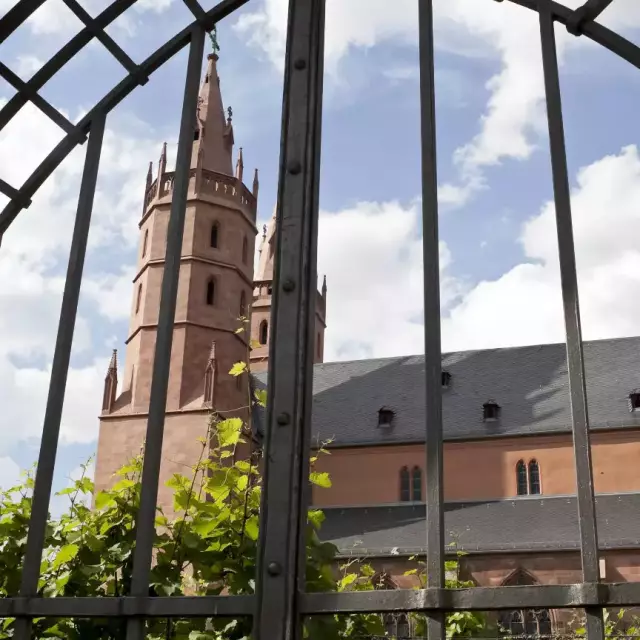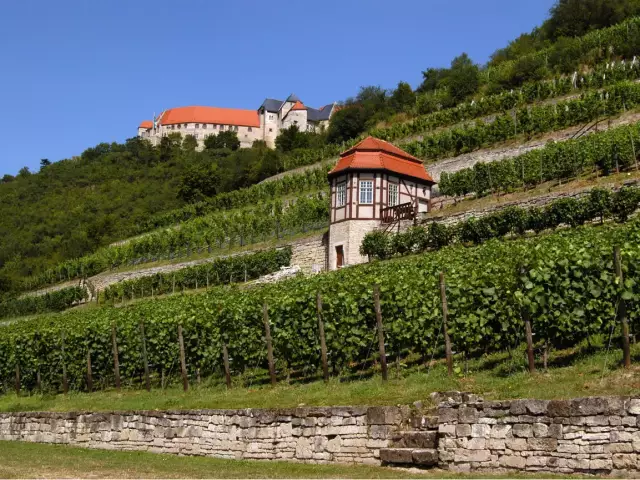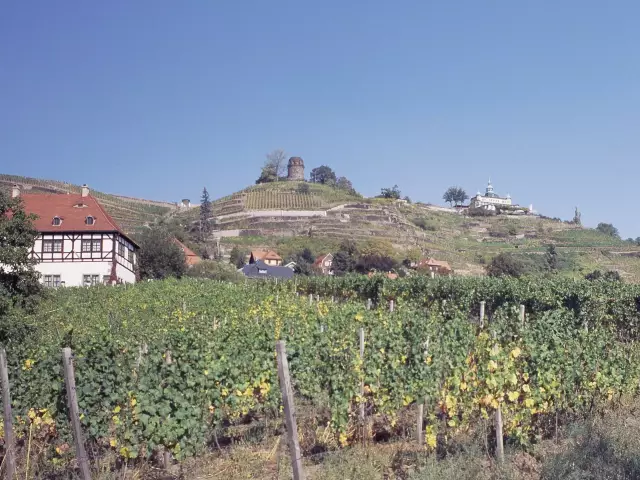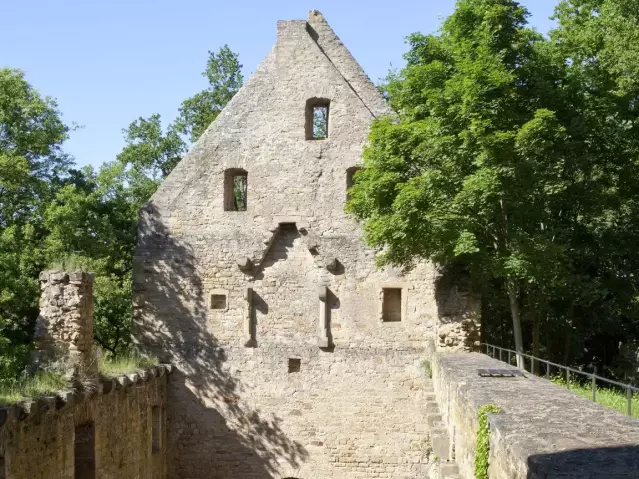Liebfrauenstift-Kirchenstück Vineyard

Abroad, Liebfraumilch used to be the equivalent for German wine in general. The wine and the name have their origin in the Liebfrauenstift vineyard which is situated around the Liebfrauenkirche in Worms.
This small gothic basilica, with its twin tower façade, its portal adorned by stone-carved figures and its beautiful aisle in the choir, was built between 1267 and 1465, to shelter pilgrims. They had travelled to see the larger-than-life statue of a Madonna from the 13th century, which was said to have performed several miracles and was attracting large numbers.
According to the legend, they would also receive a glass of delectable wine from the monastery's directors. For the exhausted pilgrims, the golden bounty of the vine was 'sweet as the milk from the holy virgin'. And so the wine produced from the parcels around the Liebfrauenkirche soon gained the rhapsodic name of Liebfraumilch (Milk of Our Lady). The first written notation of that name stems from a travel report written by an Englishman in 1687. From that time on, the name Liebfraumilch and the German Rhine wine that was associated with it, started its victorious spread throughout the world, enjoying tremendous popularity in England in particular.
England used to be the most important export partner for the winemakers in Worms, especially for the wine company J.P. Valckenberg, founded in 1786. Valckenberg proudly calls itself the oldest family-run wine trading company in Germany, and they still own about 90 percent of the vineyard site around the Liebfrauenstift. There are another four co-owners in this site: the Worms wineries Schembs, Spohr and Männchen and Weingut Gutzler from Gundheim.
As early as the mid-19th century, Valckenberg exported its original Liebfraumilch and wines from other prime locations to all continents. He was the first major exporter of German wines until the First World War. Liebfraumilch had secured itself a spot on wine lists at the world’s most expensive restaurants and was often priced more expensively than Grand Crus from Bordeaux.
The tragic flaw in this success story however, was that the name "Liebfraumilch" itself was not commercially protected. In 1834 the wine pioneer Philipp Bronner wrote down the rule that applied at the time: "... it is said that only as far as the tower casts its shadow does the actual Liebfrauenmilch grow."
Yet the lack of laws made it possible for winemakers and wine traders from the Rhine to also offer their wines with the Liebfraumilch label, which resulted in a growing number of low-end white blends marketed under that name. Therefore, in 1908, the company Valckenberg decided to protect the origin of the original Liebfraumilch and it became the first brand name wine in Germany.
The vineyard was also more precisely renamed as ‘Liebfrauenstift-Kirchenstück’ and only Riesling grapes cover the 14.3 hectares which have been classified as Grand Cru, "Großer Gewächs Rheinhessen" by the VDP. Since then, the prized Rieslings from this outstanding Worms site have reclaimed their spot in the world’s finest eating establishments.




